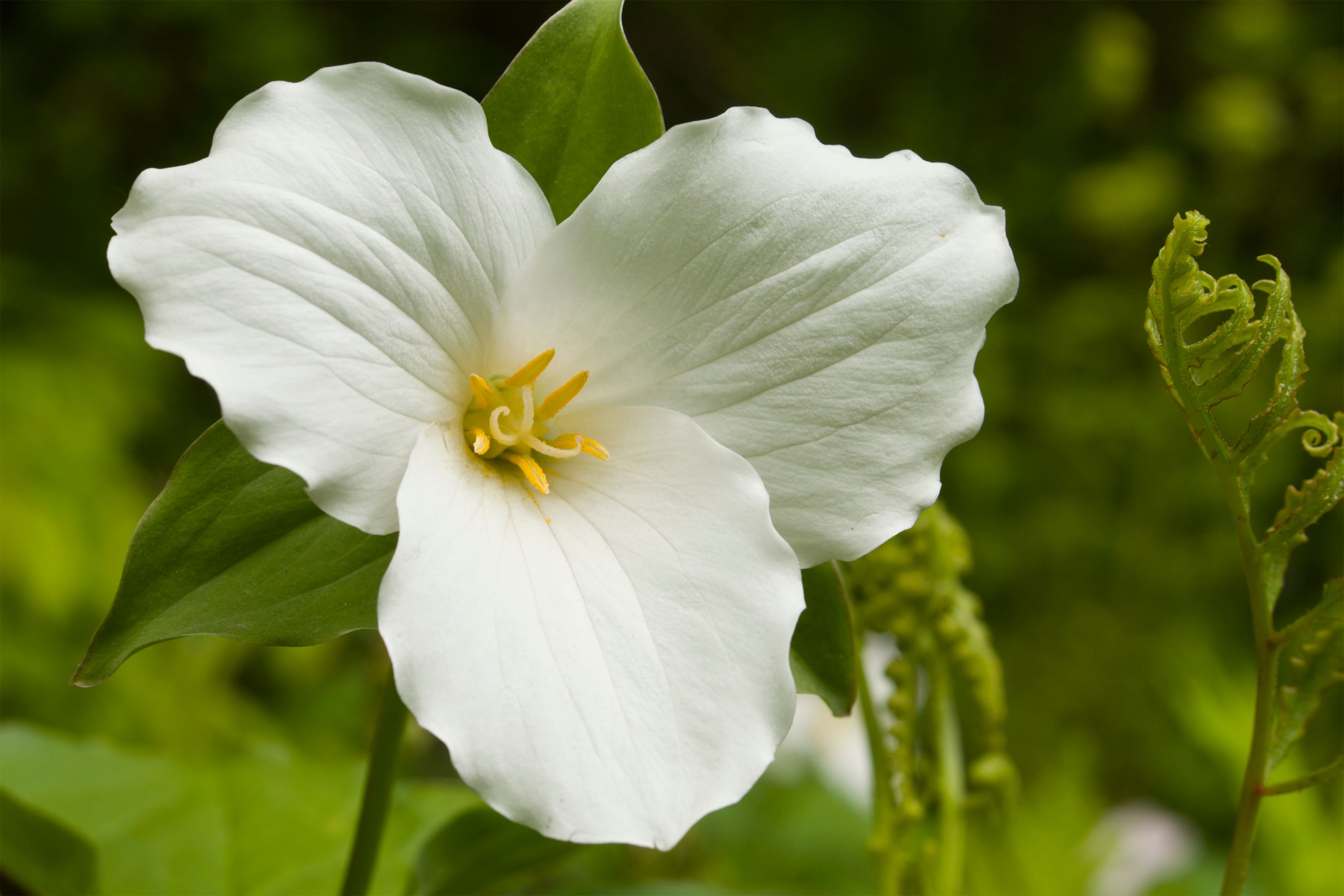Great white trillium
(Trillium grandiflorum)

Description
Trillium grandiflorum, commonly known as white trillium or great white trillium, is a perennial herbaceous plant that belongs to the family Melanthiaceae. This plant is native to North America and is widely distributed across the eastern United States and southeastern Canada. The species name grandiflorum is derived from the Latin words grandis, meaning large, and flos, meaning flower, referring to the plant's large, showy flowers. Appearance and Habitat White trillium is a herbaceous perennial that grows up to 16 inches tall, with a single stem and three large, broad leaves that are arranged in a whorl at the top of the stem. The leaves are smooth and bright green, with a prominent vein running down the middle. The stem is usually a pale green color and may be slightly hairy. The flowers of white trillium are large, white, and fragrant, with three petals that are each up to 3 inches long. The petals are arranged in a whorl above the leaves, and the flower is held above the leaves on a short stalk called a peduncle. White trillium is found in a variety of habitats, including deciduous forests, oak-hickory forests, and mixed hardwood forests. It prefers moist, well-drained soils and can often be found growing in the understory of these forests. It is most commonly found in the eastern half of the United States, from Minnesota and Missouri in the west to the Atlantic coast in the east. It is also found in southeastern Canada, from Ontario eastward to Nova Scotia. Life Cycle White trillium is a perennial plant, meaning that it lives for more than two years. It is also a spring ephemeral, meaning that it emerges from the ground in early spring, flowers, and then dies back to the ground in late spring or early summer. The plant relies on the early spring sunlight that reaches the forest floor before the trees leaf out, allowing it to grow and flower before the canopy becomes too dense. White trillium reproduces both sexually and asexually. It produces seeds that are dispersed by ants, which are attracted to the fleshy elaiosome attached to the seed. The ants carry the seeds back to their nests, where they consume the elaiosome, and then discard the seed, effectively dispersing it. White trillium can also reproduce vegetatively by sending out underground rhizomes that can produce new plants. Cultural Significance White trillium has long been recognized for its beauty and has become a popular wildflower for use in landscaping and gardening. It is also the official flower of the Canadian province of Ontario and is protected under the Ontario Endangered Species Act. It has also been used medicinally by various indigenous cultures in North America for a variety of ailments, including childbirth and gastrointestinal disorders. Conservation Status White trillium is considered a species of least concern by the International Union for Conservation of Nature (IUCN). However, some states in the United States, including Michigan and Vermont, have listed it as a species of special concern due to habitat loss and over-collection. White trillium is also threatened by the invasive species garlic mustard (Alliaria petiolata), which can outcompete it for resources and alter the forest understory ecosystem. Conclusion Trillium grandiflorum, or white trillium, is a beautiful and iconic spring ephemeral that can be found throughout the eastern United States and southeastern Canada. It is beloved for its large, showy flowers and is a popular wildflower for use in landscaping and gardening.
Taxonomic tree:







